Portals
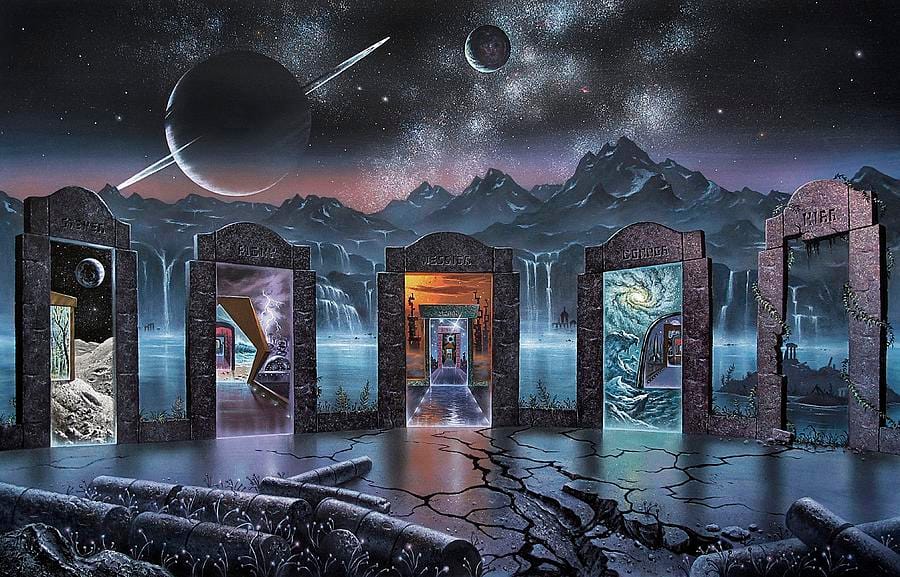
I probably don't have to explain why portals make cool sci-fi covers. They're a fun visual, they invite the reader in with a story hook – what's through that door? – and, like space helmet reflections, they provide a simple way for an artist to depict two very contrasting scenes at the same time.
I was reminded of all this when I stumbled on this new-to-me Paul Lehr illustration a few months ago.
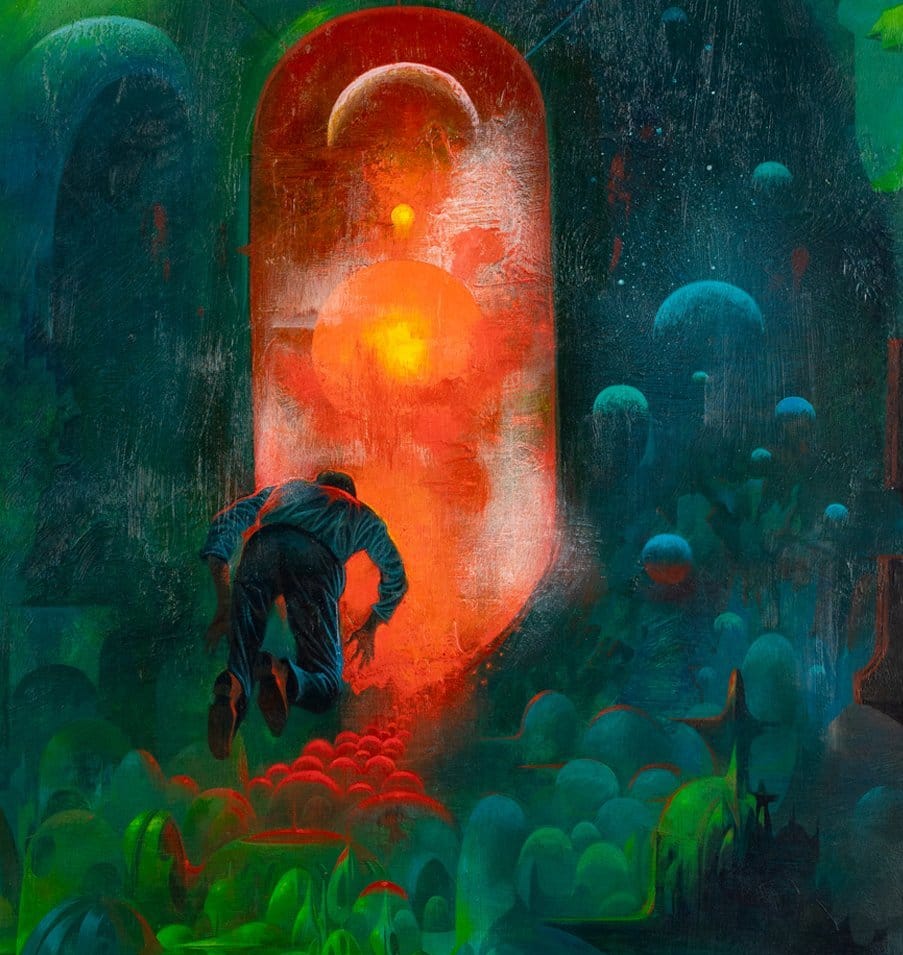
I think it might be an unpublished artwork – the only source was the spot I found it, this page on the official Paul Lehr website, discussing a documentary that's in the works about the artist.
It reminds me of this illustration by Eddie Jones, which opted for the same green-orange contrast. This one was the cover for a 1977 edition of Die phantastischen Planeten, by Hans Kneifel.
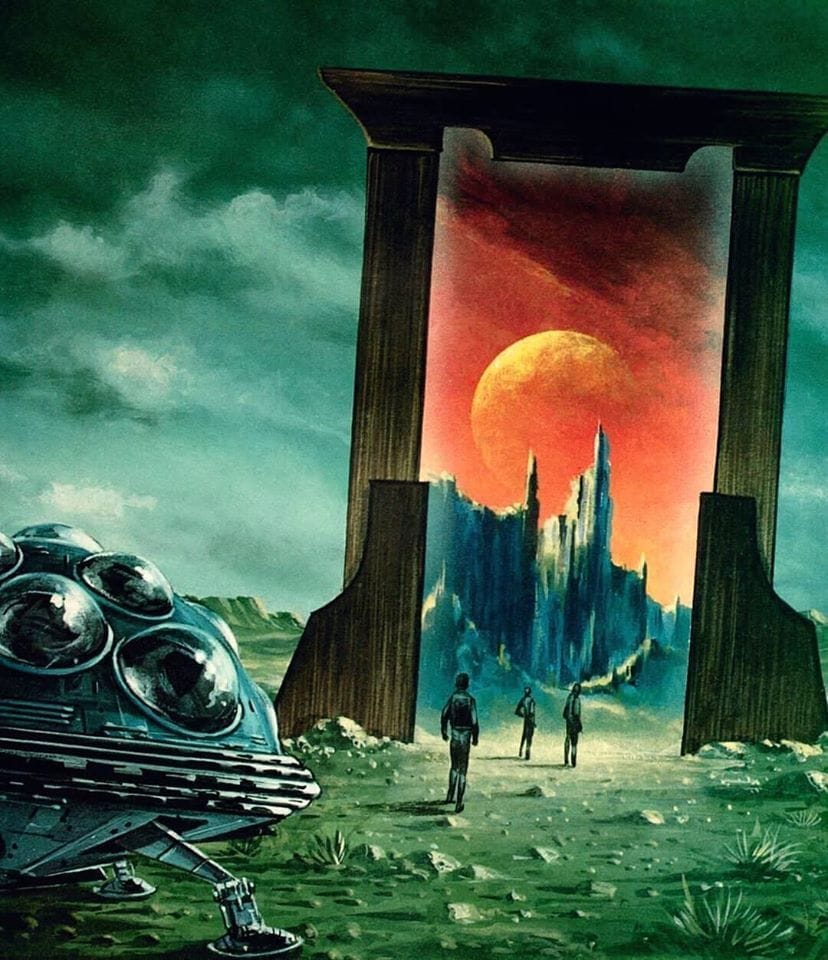
Often a portal will point directly into empty outer space, emphasizing a contrast between concepts rather than colors. Don Maitz's ‘Over The Clouds,’ which was a 1990 cover to Ray Bradbury’s Classic Stories 2, is one example.
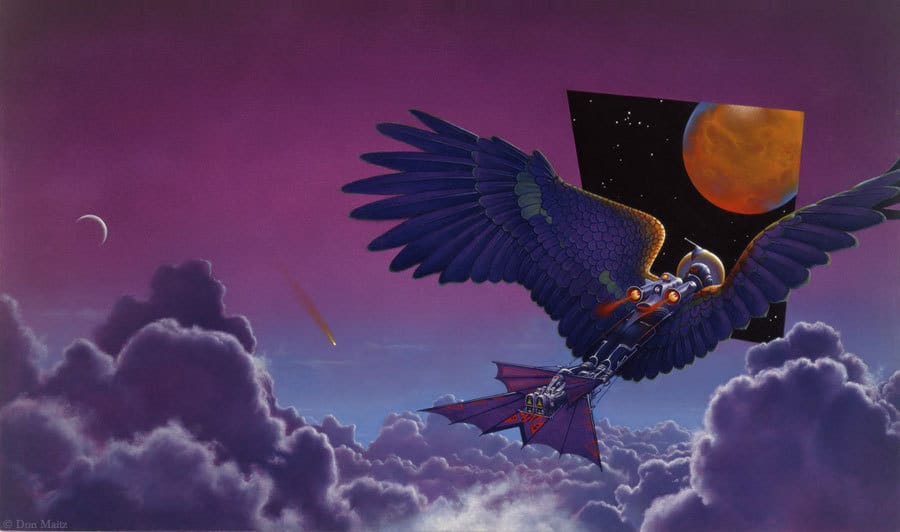
Michael Bohme has another example of the space portal, complete with a wizard to helpfully point it out.
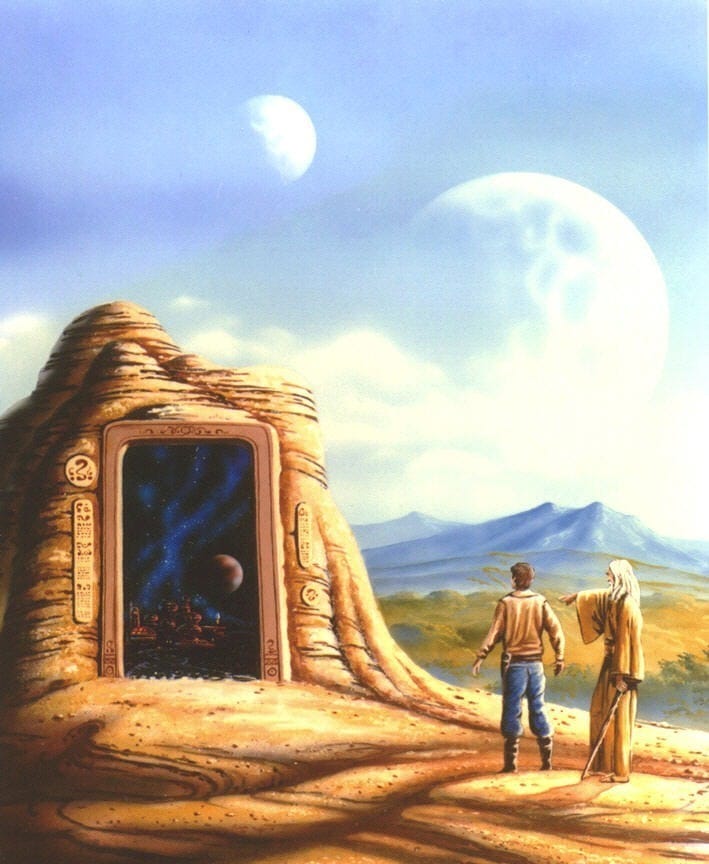
My favorite example of this type of portal might be the monolithic one on Paul Lehr's 1972 cover art for Isaac Asimov’s The Stars, Like Dust.
Also, did this image invent the design of the iPhone?? Look, you can even see the top of the Home button down there at the bottom.
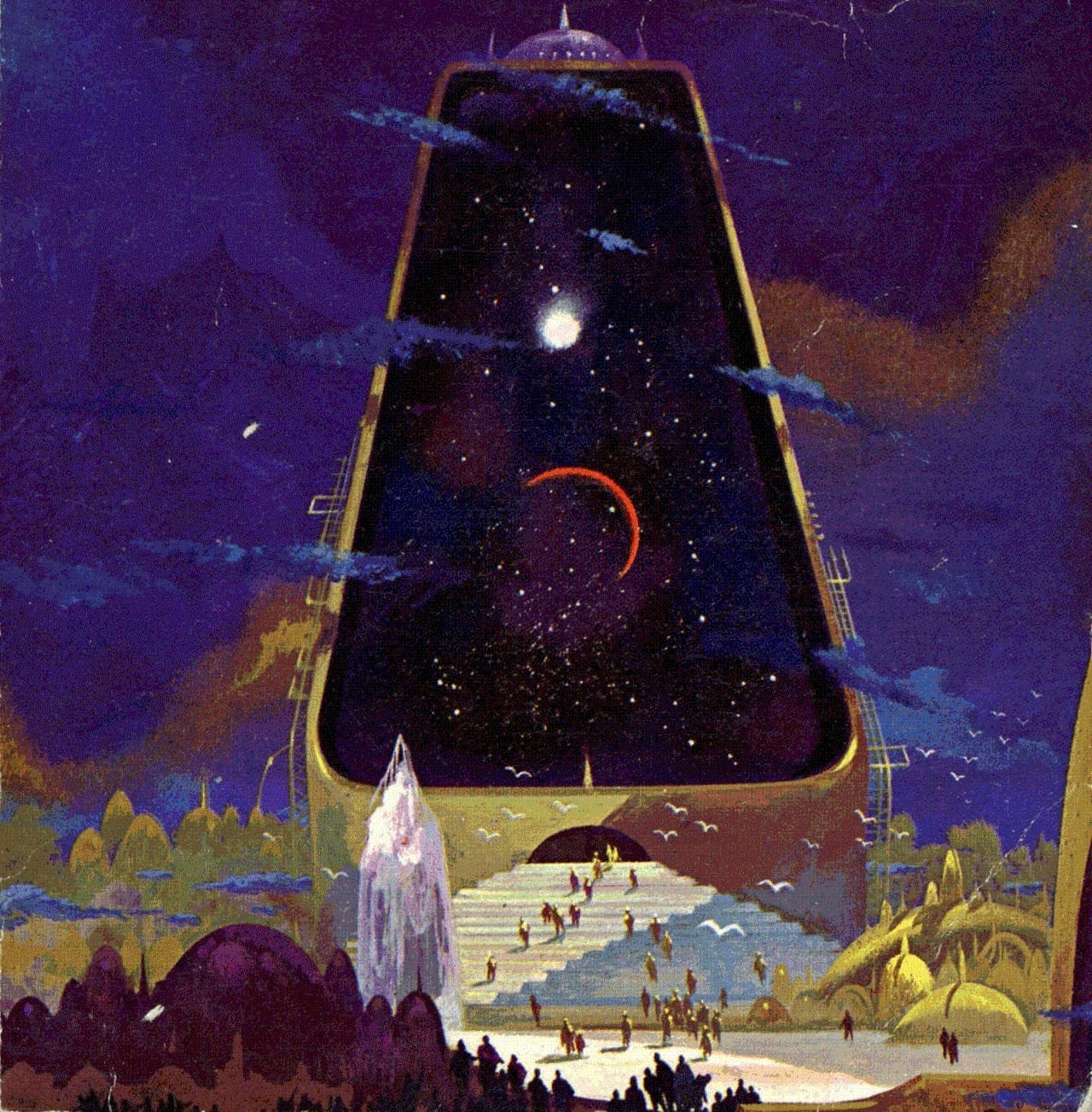
Of course, you can always do the reverse of the space portal, by sticking a portal within an otherwise lifeless outer space vista, like Jill Bauman's cover for The Magazine of Fantasy & Science Fiction's October-November 1994 issue.
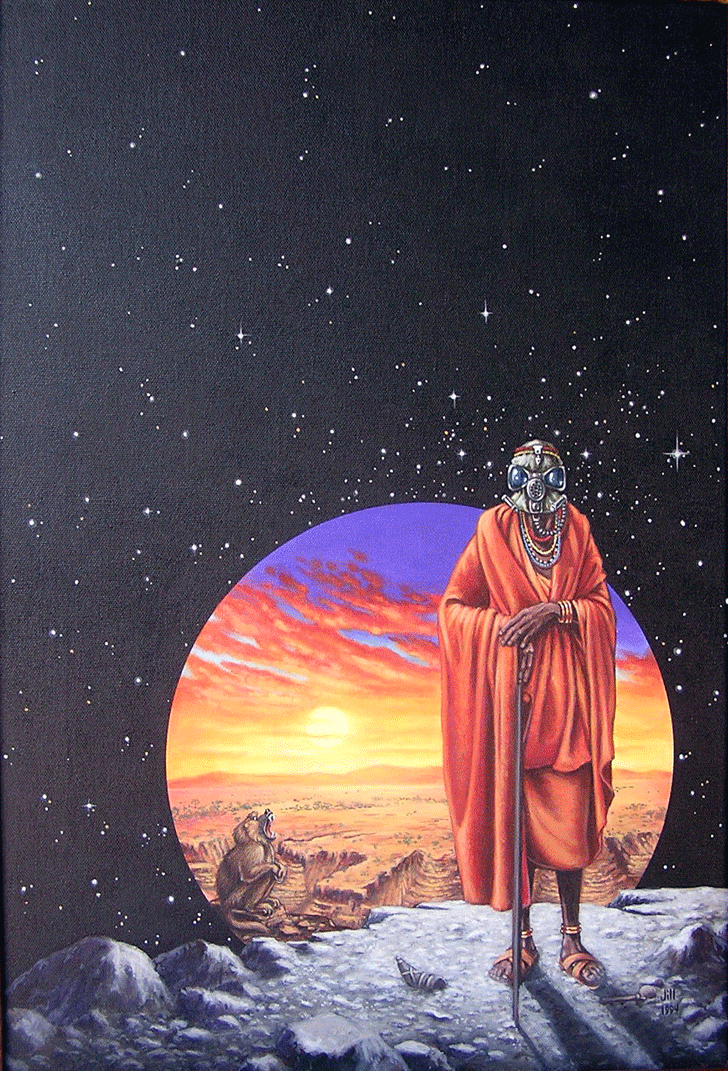
Chris Moore's cover for Tatja Grimm's World by Vernor Vinge is another example. ISFDB says it's from 1990, but Moore's art seller puts it at 1987.
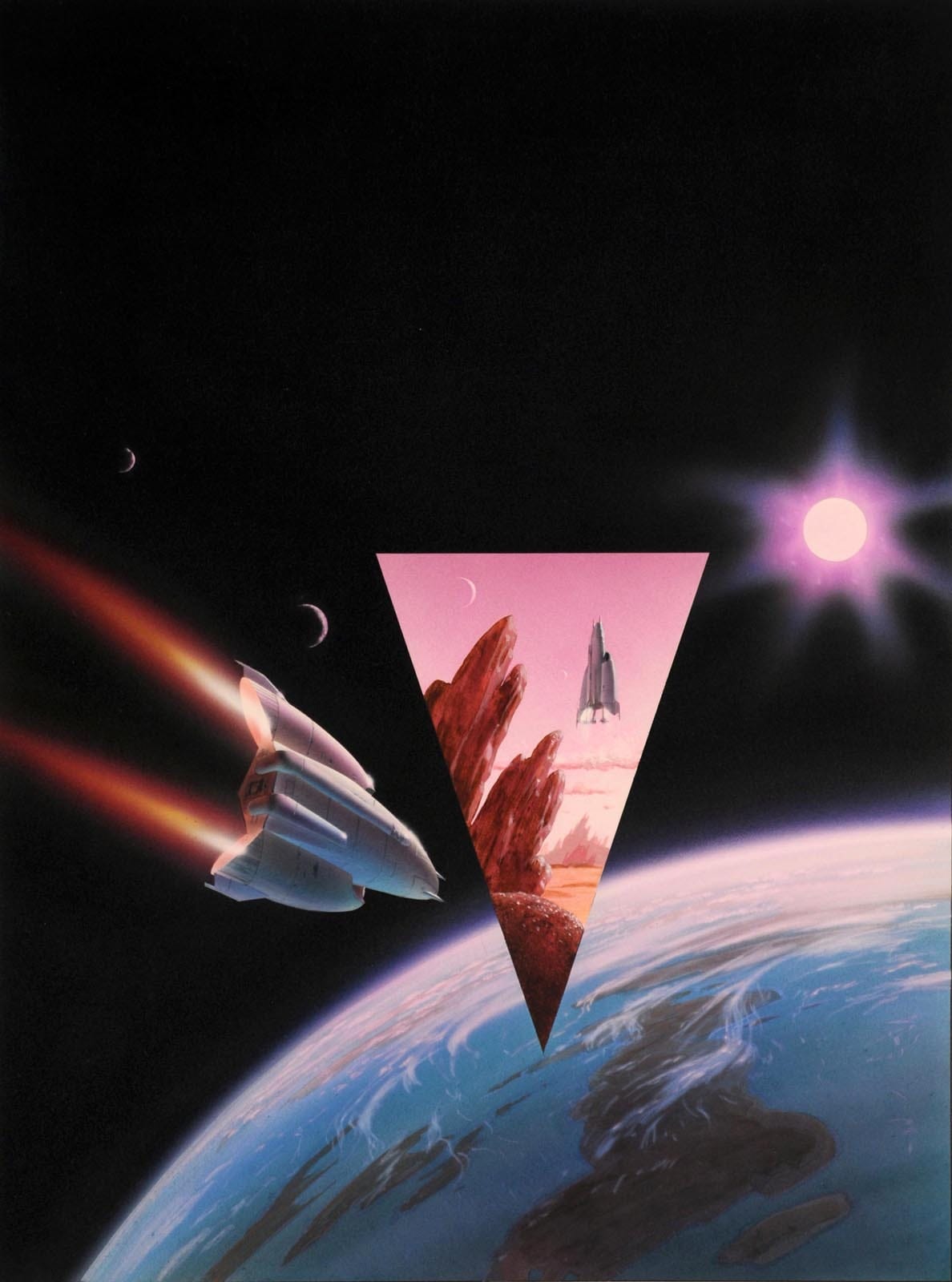
Here's an uncredited 1977 cover artwork for Stargate, by Stephen Robinett, in which the portal appears to be going from one part of space to another. This is admittedly a better sign for atmospheric pressure concerns, even if it looks a little less cool.
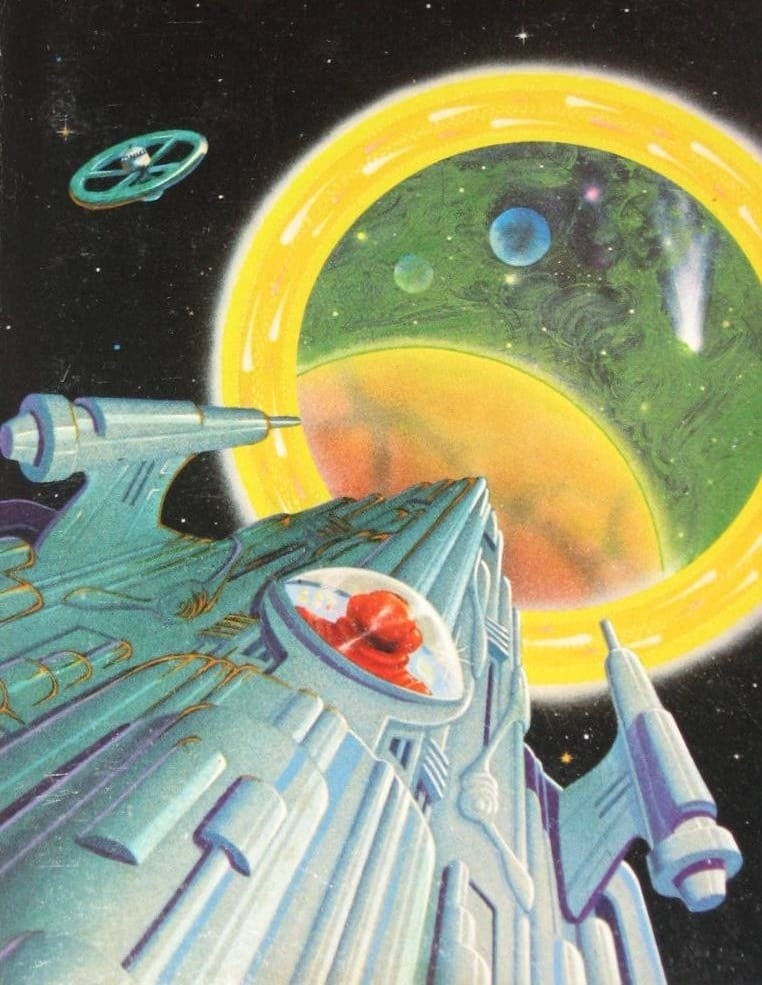
Wait, I take that back. Ron Walotsky did make it look cool with his 1996 cover to Robert J. Sawyer's Starplex, and he even threw in a dolphin flying a spaceship for good measure.
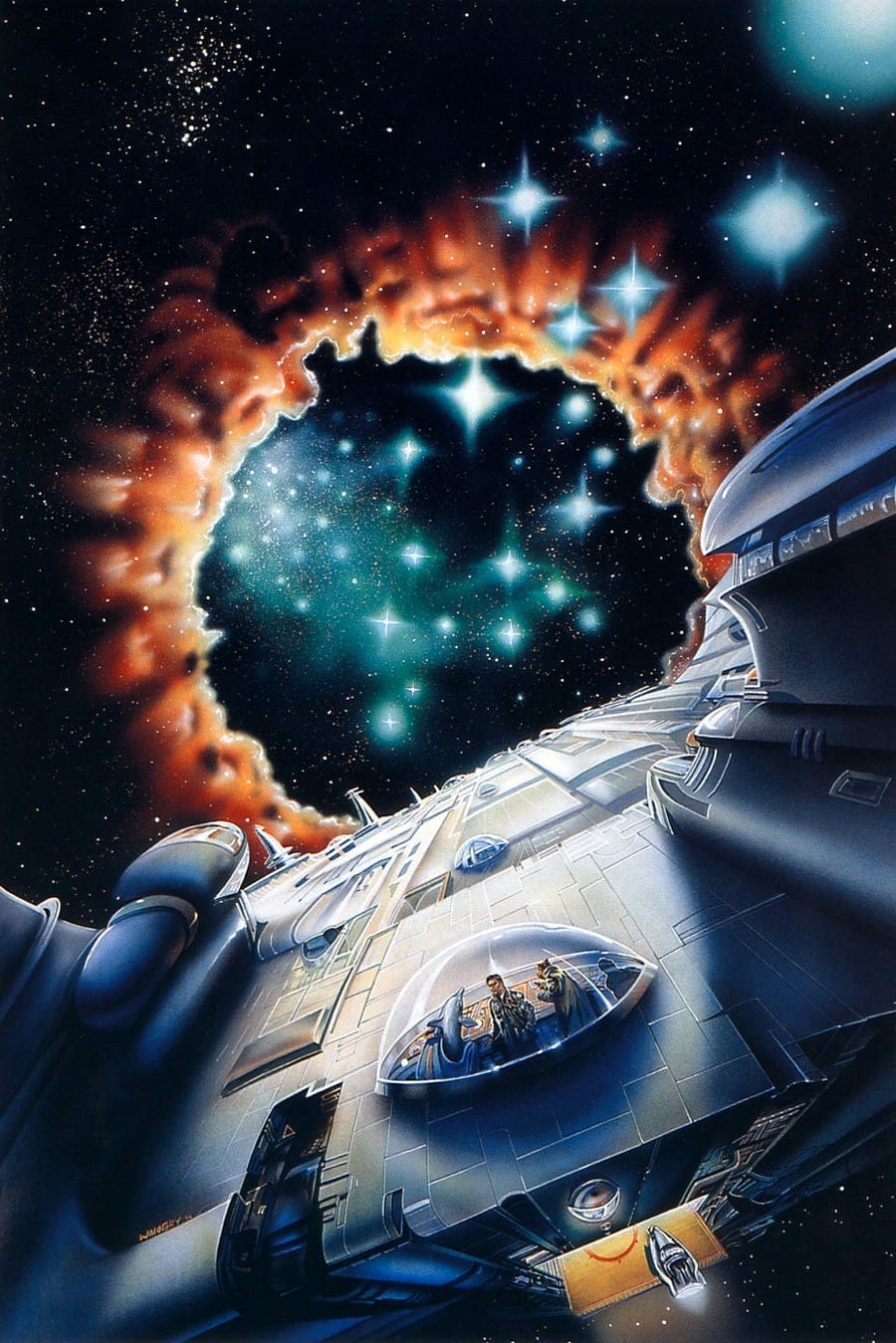
Ron Walotsky had plenty of practice with portals, having done this impressive portals-within-portals cover art 30 years earlier, with his 1969 cover to Robert Silverberg's Dimension Thirteen.
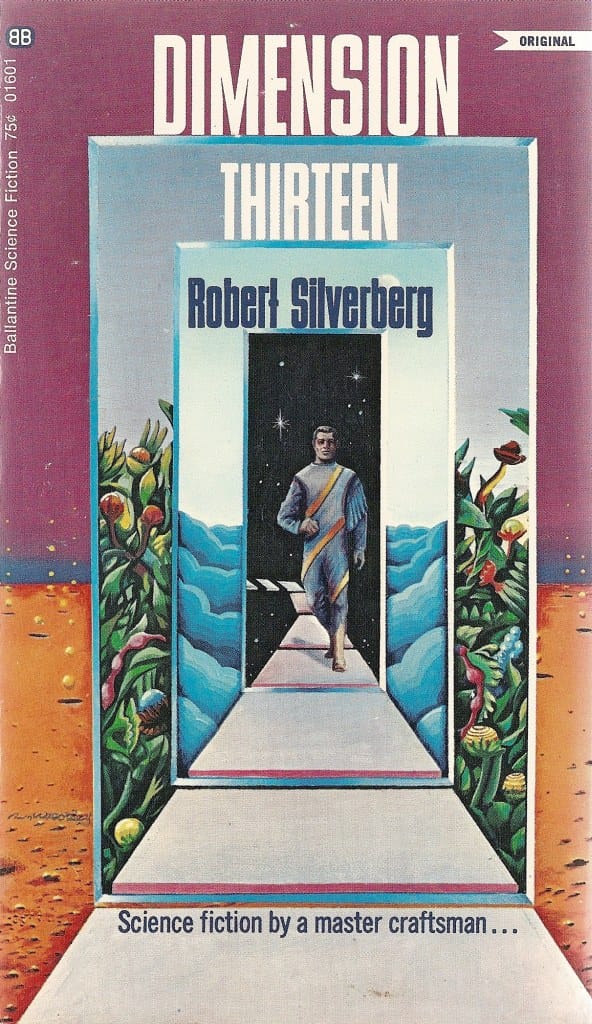
All these examples are just portalling over the surface of the amount of portal-based sci-fi covers out there – it's an enduring cover art trope.
Next Time: Flasks and Test Tubes